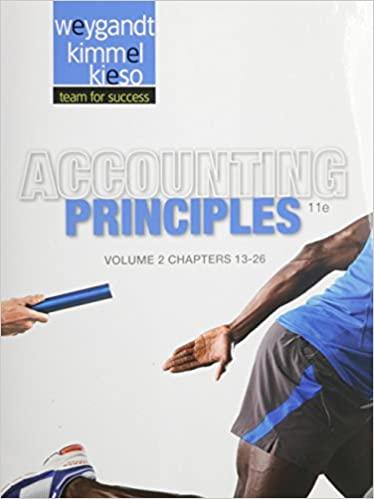Answered step by step
Verified Expert Solution
Question
1 Approved Answer
Dalkom Source, Inc. (DSI), is a processor and distributor of a variety of blends of coffee. The company buys coffee beans from around the world


Dalkom Source, Inc. (DSI), is a processor and distributor of a variety of blends of coffee. The company buys coffee beans from around the world and roasts, blends, and packages them for resale. DSI offers a large variety of different coffees that it sells to gourmet shops in one-pound bags. The major cost of the coffee is raw materials. However, the company's predominantly automated roasting, blending, and packing processes require a substantial amount of manufacturing overhead. The company uses relatively little direct labor. Some of DSI's coffees are very popular and sell in large volumes, while a few of the newer blends sell in very low volumes. DSI prices its coffees at manufacturing cost plus a markup of 25%, with some adjustments made to keep the company's prices competitive. For the coming year, DSI's budget includes estimated manufacturing overhead cost of $2,200,000. DSI assigns manufacturing overhead to products on the basis of direct labor-hours. The expected direct labor cost totals $600,000, which represents 50,000 hours of direct labor time. Based on the sales estimate and expected raw materials costs, the company will purchase and use $5,000,000 of raw materials (mostly coffee beans) during the year. The expected costs for direct materials and direct labor for one-pound bags of two of the company's coffee products appear below. Kenya Dark Viet Select Direct materials $4.50 $2.90 Direct labor (0.02 hours per bag) $0.24 $0.24 DSI's controller believes that the company's traditional costing system may be providing misleading cost information. To determine whether or not this is correct, the controller has prepared an analysis of the year's expected manufacturing overhead costs, as shown in the following table: Expected Activity Expected Cost Activity Cost Pool Activity Measure for the Year for the Year Purchasing Purchase orders 2,000 orders $ 560,000 Material handling Number of setups 1,000 setups 193,000 Quality control Number of batches 500 batches 90,000 Roasting Roasting hours 95,000 roasting hours 1,045,000 Blending Blending hours 32,000 blending hours 192,000 Packaging Packaging hours 24,000 packaging hours 120,000 Total manufacturing overhead cost $2,200,000 Data regarding the expected production of Kenya Dark and Viet Select coffee are presented below. Kenya Dark Viet Select Expected sales 80,000 pounds 4,000 pounds Batch size 5,000 pounds 500 pounds Setups 2 per batch 2 per batch Purchase order size 20,000 pounds 500 pounds Roasting time per 100 pounds 1.5 roasting hours 1.5 roasting hours Blending time per 100 pounds 0.5 blending hours 0.5 blending hours Packaging time per 100 pounds 0.3 packaging hours 0.3 packaging hours Required: A. Using direct labor-hours as the base for assigning manufacturing overhead cost to products, determine the unit product cost of one pound of the Kenya Dark coffee and one pound of the Viet Select coffee. (5 points) B. Using activity-based costing as the base for assigning manufacturing overhead cost to products, determine the unit product cost of one pound of the Kenya Dark coffee and one pound of the Viet Select coffee. (10 points) C. Write a brief memo to the president of DSI explaining what you have found in (A) and (B) above and discussing the implications to the company of using direct labor as the base for assigning manufacturing overhead cost to products. (5 points)
Step by Step Solution
There are 3 Steps involved in it
Step: 1

Get Instant Access to Expert-Tailored Solutions
See step-by-step solutions with expert insights and AI powered tools for academic success
Step: 2

Step: 3

Ace Your Homework with AI
Get the answers you need in no time with our AI-driven, step-by-step assistance
Get Started


